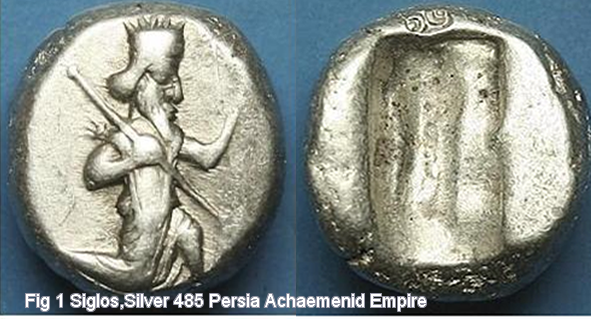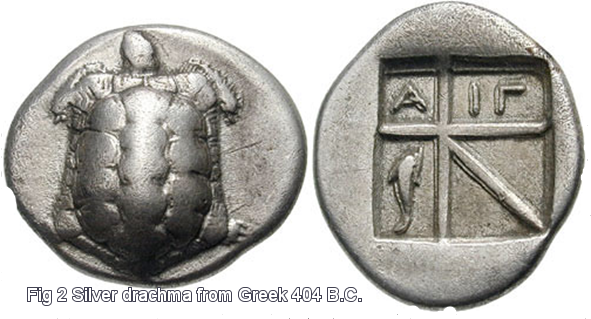History of Silver
The mining of silver began some ca 5000 years ago. Silver was first mined in about 4157 B.C. in Egypt , 3660-3520 B.C. in Persia(Iran) or 3000 B.C. in Anatolia (Turkey).Of course, it should be consider at that time all these area called Persia. These early lodes were a valuable resource for the civilizations that flourished in the Near East, Crete, and Greece throughout antiquity.
The ancient Persians used silver coins between 612-330 B.C. (fig 1).

Silver has been used as a coinage metal since the times of the Greeks; their silver drachmas were popular trade coins (fig2)

The first upsurge in the production of silver took place when the Greeks exploited the mines of Laurion, which reached their peak productivity in ca.500 B.C. In about 100 A.D., Spain became the capital of silver production. The Spanish mines were the major supplier for the Roman Empire and an essential trading component along the Asian spice routes. Several major silver mine discoveries occurred between 750 and 1200 A.D., including the Germany and Eastern Europe. The 500-year period from 1000 and 1500 A.D. was one of significant growth thanks to an increased number of mines as well as improvements in production and technology.
After discovery of America, silver was extracted by the Spanish and brought to Europe in large quantities. Also, new deposits were developed. Soon, America was producing more silver than Europe, and prices collapsed. Up to ca 1700, world production was dominated by Central and South America. In the 1800s, the main centre production was North America, Mexico, Canada and United States (Nevada).In this time also, significant quantities of silver were produced in Russia and Australia, and the output production of Europe was almost entirely associated with lead and zinc.

